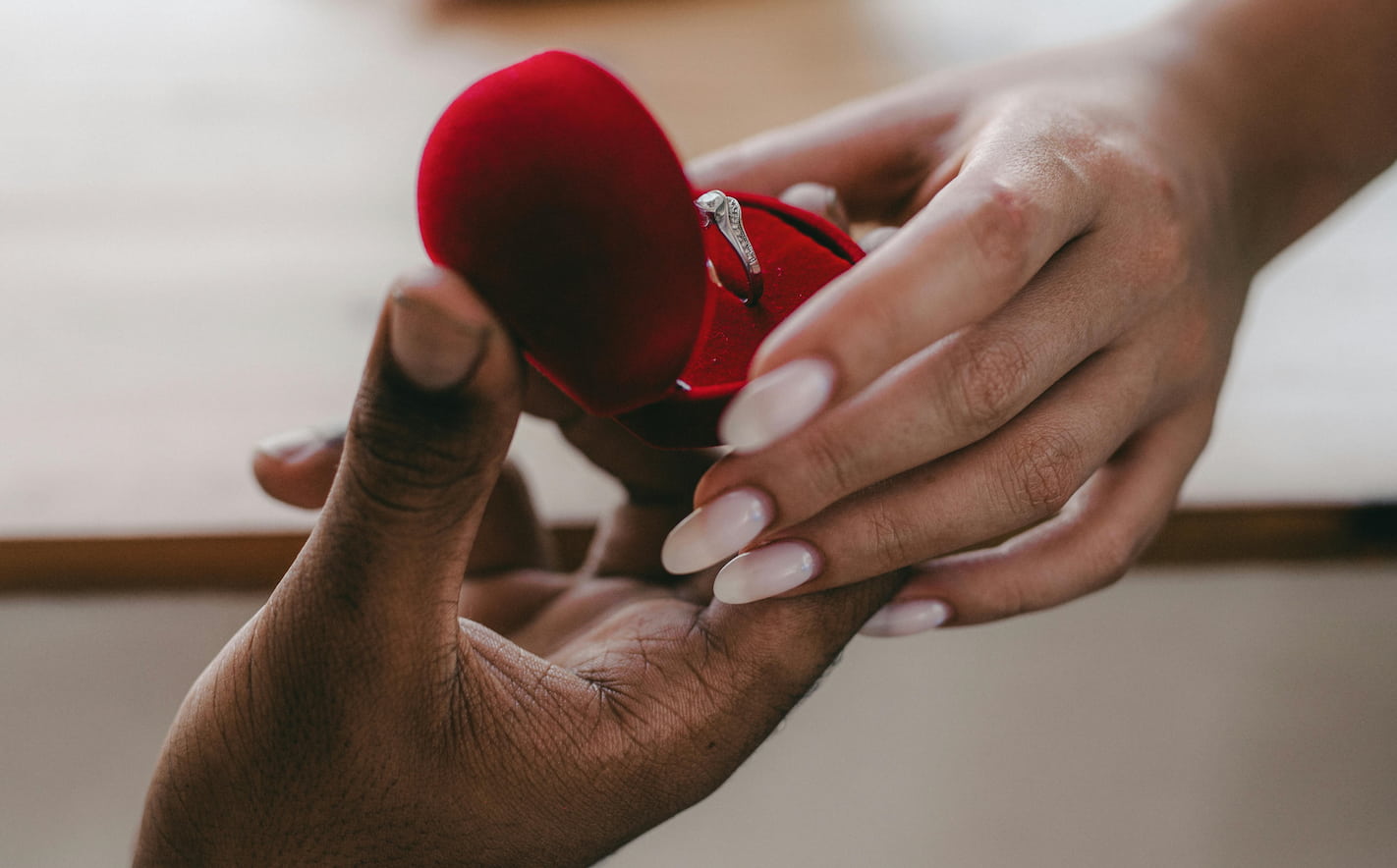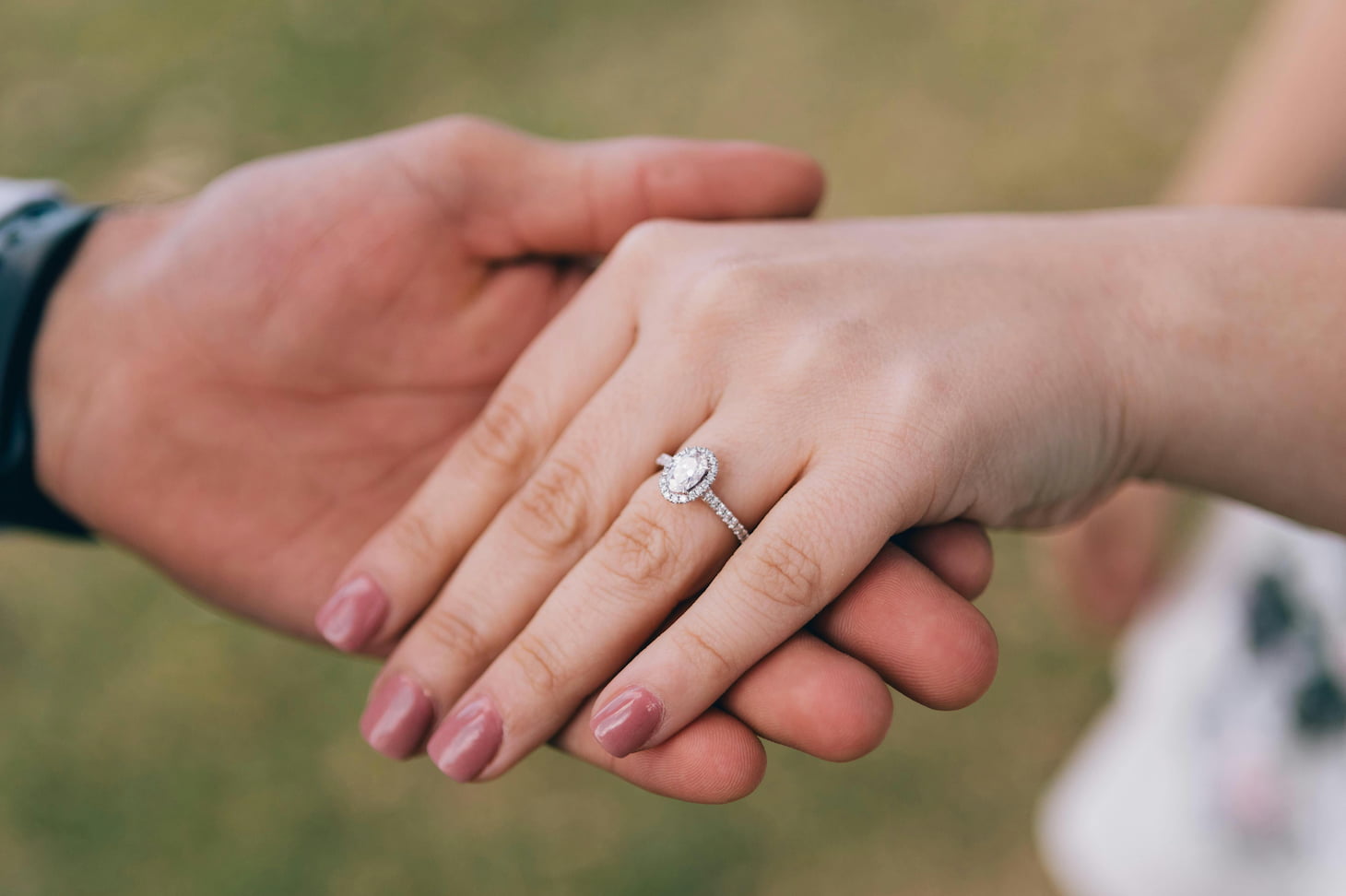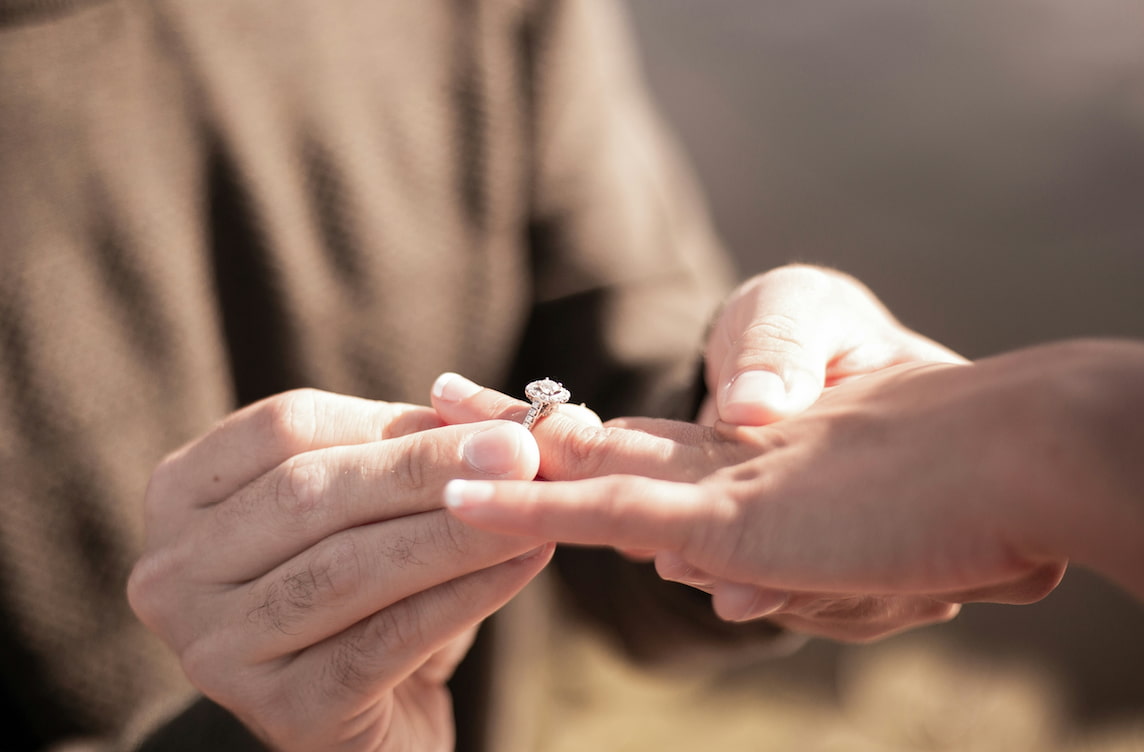So, you've spent countless years, months, days, and hours together, also shared unforgettable moments, and you're certain your lover is "The One." Now, you're ready to take the next step and pop the big question with a beautiful engagement ring. But there's just one catch — you haven't quite saved enough.
Saving for an engagement ring can feel like a big task, especially if you're not even sure how much to spend yet. But don't stress! In this guide, we'll break down everything you need to know about how to save for an engagement ring. You'll learn how much engagement rings usually cost, the best ways to save up for one, and different ways you can pay for it when the time comes, so make sure you read to the end!

Before we dive into how to save up for an engagement ring, the first step is to figure out how much you should spend on one. Understanding the typical costs of engagement rings can help you set a realistic budget.
You've probably heard of the old rule that says you should spend two to three months of your salary on an engagement ring. So, if you make $5,000 a month, the idea would be to save up at least $10,000. While "how many months to save for an engagement ring" might sound like a helpful guideline, it's actually more of a diamond marketing concept from decades ago than a hard-and-fast rule.
According to The Knot's 2023 Jewelry and Engagement Study, on average, couples in the United States spend about $5,500 on an engagement ring. However, this number isn't set in stone. Roughly a third of people spend anywhere from $1,000 to $4,000, while others choose to invest more depending on their personal preferences and financial situation.
Several factors influence the cost of an engagement ring:
At the end of the day, there's no one-size-fits-all answer when considering how much to save for an engagement ring. The key is to find a balance that feels right for your budget and your relationship. Talk it over together to make sure you're both comfortable with how much to spend on the ring. It's about what feels right for your situation, not what's "expected."

If you've been wondering "How can I afford an engagement ring?", worry not. Saving for an engagement ring doesn't have to feel overwhelming—you just need a clear plan and some smart strategies. Here are some tips to help you stay on track while keeping the process stress-free:
First, decide how much you can comfortably spend on the ring. As we've covered on engagement ring budgeting, it's important to forget the old "two to three months' salary" rule and focus on what fits your financial situation instead. Consider your income, expenses, and any upcoming costs, like a wedding or buying a home. Setting a clear budget helps you know your savings goal.
The sooner you begin saving, the easier it will be. Even small amounts add up over time. Set up a separate savings account just for the ring and arrange automatic transfers from your paycheck. This way, you're consistently building your fund without much effort. Look for a high-yield savings account to earn a bit of extra interest as you save.
Look at your spending habits to find areas where you can cut back. Maybe it's dining out less, skipping that daily coffee shop visit, or canceling unused subscriptions. Redirecting these savings to your ring fund can make a big difference over time.
Diamonds are traditional, but other gemstones like sapphires, rubies, or emeralds can be beautiful and more affordable. Lab-grown diamonds are another option; they look identical to natural ones and often cost less. Exploring these alternatives can help you find a stunning ring within your budget.
Opting for a slightly smaller diamond can significantly reduce the price. For example, choosing a 0.9-carat diamond instead of a full 1-carat can save you hundreds without a noticeable difference in appearance. This strategy allows you to get a beautiful ring without overspending.
Let's be clear - saving for an engagement ring doesn't mean giving up fun dates. That's far from it. The catch here is that instead of fancy dinners or expensive nights out, you can get creative with affordable options. You can go for free dates like hiking, cooking a romantic meal at home, or checking out a local art show. You'll still enjoy quality time together without breaking the bank while saving the money meant for fancy dates for the engagement ring.
Keep an eye out for sales events like Black Friday or holiday promotions. Jewelers often offer discounts during these times, which can help you save a significant amount. Planning your purchase around these events can be a smart way to get the ring you want at a lower price.

When it comes to purchasing an engagement ring, there are several payment options available, each with its own set of advantages and considerations. Here's a breakdown to help you choose the best method for your situation:
The ideal way to pay for an engagement ring is with money you've saved specifically for this purchase.
Pros:
Cons:
Tip: If you choose this route, ensure you still have an emergency fund in place to cover unexpected expenses.
Using a credit card can be a smart option if you're confident you can pay off the balance quickly.
Pros:
Cons:
Tip: If you opt for a credit card, try to use one with a low-interest rate or a 0% introductory APR offer. Be sure to pay off the balance before the promotional period ends to avoid interest charges.
Many jewelry stores offer financing plans to help you spread out the cost of the ring.
Pros:
Cons:
Tip: Read the terms carefully. Ensure you understand the interest rates, fees, and what happens if you miss a payment or don't pay off the balance in time.
If you need more time to pay or want to avoid using credit cards, a personal loan could be another option.
Pros:
Cons:
Tip: Shop around for the best rates and terms. Ensure the monthly payments fit comfortably within your budget.
Figuring out how to save for an engagement ring doesn't have to be overwhelming. With a little planning and a few smart strategies, you'll be able to make this special purchase without breaking the bank. Whether it's setting up automatic transfers months in advance or exploring flexible payment options, the key is finding what works best for you and your partner. At the end of the day, it's not about the price tag on the ring but the thought and love behind it. Now that you've got the tools to save and plan, you're one step closer to creating an unforgettable proposal moment!
Yes, lab-created diamonds are a great way to save money while still getting a high-quality, beautiful engagement ring. They are chemically and visually identical to mined diamonds but cost 30-50% less, making them a budget-friendly and sustainable option.
There are a few ways to finance an engagement ring if you don't want to pay all at once. Many jewelry stores offer financing plans, so you can make monthly payments instead of a big upfront payment. You could also use a credit card with a manageable monthly payment plan or consider a personal loan if that works for you.
A common guideline suggests spending two to three months' salary on an engagement ring, but this is an outdated marketing concept, not a rule you have to follow. In 2024, the average cost of an engagement ring is around $5,500, but many couples spend between $1,000 and $4,000. Ultimately, it's important to choose a ring that aligns with your budget and holds personal significance, rather than adhering to external expectations.
Choosing between white gold vs silver jewelry? Compare their pros, cons, costs, and durability with our guide to decide which metal is the better fit for you.
Read MoreWondering what is statement jewelry? Learn all about it here, explore its types, and get tips on choosing and styling bold pieces that define your unique look.
Read MoreLearn what is oxidized silver, how it wears over time, the easy way to oxidize silver yourself, and preventive tips for maintaining its unique finish.
Read MoreHow to store jewelry safely and beautifully? Discover expert tips to prevent tarnish, organize pieces, and keep your collection in top condition.
Read More